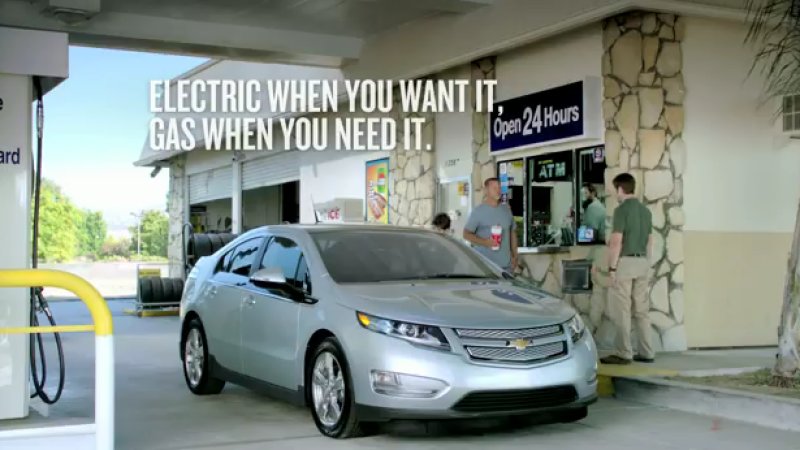The Mitigaptationist is no “influencer,” but we’re not above pitching a product. In fact, we now present a full-throated endorsement of our own car, the second-generation Chevy Volt. We’ll do it here on economic grounds, and leave green-ness, technical quality, safety, joy to drive, and other virtues to better qualified reviewers (first-gen 2011 “Car of the Year,” second-gen 2016). To us, if you have to drive a car in the year 2018, while also caring about the impact of doing so, the Chevy Volt is the car to drive.
A lease is the best way to cash in on this cost-effective chance to help shift the American landscape from its hundreds of millions of automotive smokestacks to an altogether new energy paradigm. Nissan, Chevy, and BMW, to push their unconventional Leaf, Volt, and i3 into out into the world, have relied upon low-profit low-cost leases made cheaper by spreading out the $7,500 federal incentive over 36 months.
The cars are all technological wonders, but Chevy’s Volt is a bit confusing in that it has a 60-mile electric range (or 43 miles for the first generation) backed up by a generator. When the electric miles are fully spent, the generator silently kicks in and efficiently pushes the car’s torquey and playful electric drive for as long as you want it to. (For us, that meant that for as long as several months when we lived in an apartment building without EV chargers, we simply had a normal, quick, efficient, well-built internal combustion car, except when we could find a charger somewhere. Otherwise we almost never drive on gas. It’s literally two cars in one.)
Teslas argue themselves beautifully as the perfect car in a perfect scenario where transportaion budgets are limitless and charging is easy and plentful. But to us, the Volt is the perfect car for anyone who has a budget and any kind of need to be out of range of charging stations.
Sadly though, Chevy has never done a good job of marketing its tech wonder for just how cost-effective, and otherwise practical, it actually is. Say it: “we’ve made this cheap to own!” Say it: “there’s no range anxiety!”

The Volt (including the first-generation shown here) is really the perfect car for our collective transition from petroleum infrastructure to electric. Sadly, Chevy hasn’t made much of an effort to explain that to an audience that generally loves and embraces technological improvements. This ad was one of the better attempts.
Anyway, here are the numbers.
We took both our 2013 and 2016 Chevy Volts with typical leases that, at $229 a month, cost about the same as the monthly fuel bill of our previous 1996 Mercedes 320E (three tanks/month) and 2004 Saab 9-5 (four tanks/month). The down payments of around $3,000 were nearly offset by the state of California’s $2,500 tax rebates. Licensing and insurance for the new cars cost more than they did on the old dinosaur-drinkers, but maintenance on the two three-year leases was limited to rotating the tires and alignment on one of the two of them. Our electricity bill went up by an average of about $20/month, which we consider a nice trade-off for losing the guilt associated with internal combustion. (If you drive on electricity for a while and return to a V-8, you feel that guilt in your foot when you step on the accelerator.)
As you can see, those numbers are loose and they vary for every person depending on local energy cost, availability of government incentives, etc. But for us, driving brand-new Volts cost just about the same as the aging sedans they replaced — and that doesn’t begin to take into account the wider benefits of zero emissions, zero petroleum, and the critical mass created in the market by choosing a cleaner technology over the one that’s driving us into the ground.
Nor does that take into account the collective benefit of having a Chevy Volt on the road for, say, a lifetime of 15 years, rather than buying a new internal-combustion car and bringing into the world another being that’s going to need the petroleum infrastructure until the year 2032.
Will such an infrastructure even be feasible by then? And if feasible, will it be ethical? Questions better left for another time.
Cross-posted at the ClimateFightr Tumblr.

0 Comments